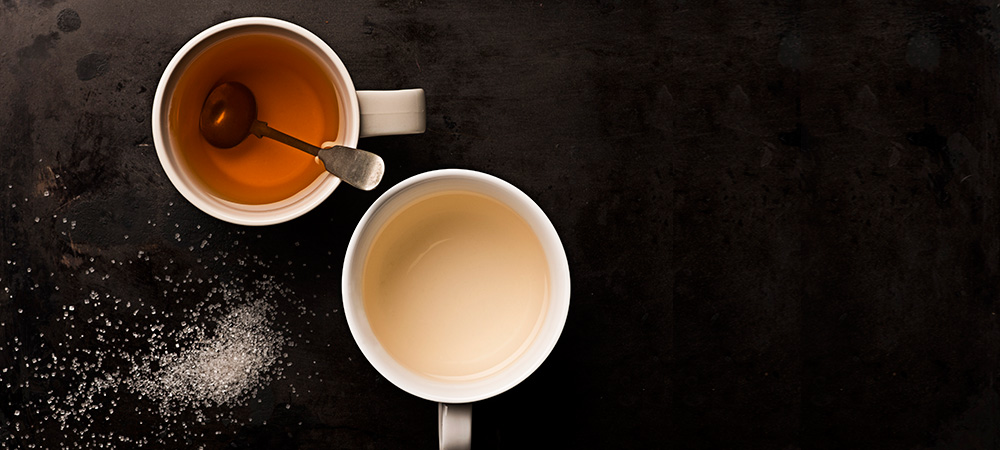960 to 1279 – the mighty Song Dynasty ruled over China and the world was introduced to a slew of many a necessary evil; paper currency, a standing navy, and gunpowder. Striving balance, they also ensured culture and art flourished. Which brings us to a small but significant contribution of theirs, something that still pleasures millions of people.
Oolong tea. Even the word brought to my mind tranquil tea houses, graceful hostesses who moved like air and tea served in delicate, decorated cups. Strange, considering black teas or green teas could never paint an image that vivid.
Oolong. A delicate, melodious word for a delicate, mysterious drink. For such a rich and delicious tea, oolong is relatively lesser-known. And you know me, the champion of lesser-known teas. Read on as I take you through the basics of this fantastic beverage.
Legend behind the name
The term oolong is derived from the Chinese name (wu-long cha) meaning black dragon tea. And if you thought the name is powerful, wait till you hear the origins.

The Song Dynasty was known its phenomenal advancements in military. This was out of necessity since the period was also filled with great turmoil. China had been unified again and it was under constant threat of invasion. Now, the tea farms were already spread over a whopping 242 counties. So naturally, tea trading formed the backbone of the economy.
While their naval fleet was strong, the procurement of horses was still a problem in China. But without horses, the country stood no chance against the powerful armies of Asian plains. What they did have and was revered throughout Tibet, Central Asia and the West was tea. It only made sense to trade tea for horses.
The tea leaves were pressed into a brick or cake with the image patterns of the Chinese Dragon or Fenghuang embossed on it. These were exchanged in trade or extended as a token of appreciation and called tribute tea. So the name black dragon tea came from Dragon-Phoenix Tea Cake tribute tea.
Production of Oolong tea
The process of production of Oolong tea is probably the most complicated among all the teas. Fired for too long, it becomes smoky. Fire it too less, it may continue to ferment. Excess oxidation can make it black tea while too less may mean green. Tea-making is an art and oolong tea requires the master.
Oolong teas are semi-oxidized. This causes the tea to develop flowery and fruity aromatic compounds which can be easily detected in its aroma.
Withering/Wilting – the fresh leaves are left out in the sun and open air to remove excess moisture.
Bruising– the wilted leaves are tossed about in a tray to break them, hence quickening oxidation.
Fermentation – the leaves are let be so the chlorophyll is broken down and tannins are released.
Fixing – the tea is heated to stop the enzymes responsible for oxidation. The finishing steps, though, vary depending upon what kind of oolong is manufactured.
Balled oolong: The tea is packed in large cloth bags and tightened using a machine to a compact size, then rolled using another machine. The bag is then emptied and the tea is broken down. This process is repeated 30-60 times until the tea leaves are very tightly compressed into little balls.
Baked oolong: The tea is slowly baked at a low temperature. This causes it to develop a slightly burnt, caramel flavor and aroma. This also reduces the caffeine level.
Benefits of Oolong tea
Weight management:
Oolong tea promotes fat metabolism (pushing the body to burn fat for energy), and block the absorption of excess fat and cholesterol. So regular consumption of oolong tea can boost your weight loss*. *Combined with a healthy diet and exercise, of course. Chugging soda, stuffing burgers and washing it down with oolong tea wont help.
Diabetes:
Blood sugar and insulin can be regulated by oolong tea at any one time. This prevents the dangerous spikes and dips in blood sugar that spells disaster for type-2 diabetes patients. With the regular medicines, oolong tea can balance the blood sugar levels.
Stress management:
A controlled experiment performed on mice showed that 10%-18% of subjects showed improvement in stress levels after consumption of oolong tea. The presence of natural polyphenols in it is cited as the reason.
The simple pleasure of drinking a warm, delicious beverage
Exactly what it sounds like.
How to pick a good oolong tea
Since it is indigenous to China, the best oolong teas in the world are still produced there. Da Hong Pao is a Wuyi oolong tea which is considered the most prestigious and expensive in the world. It can sell up to $ 1,025,000 per kilogram. Taiwanese oolong teas are also considered quite excellent. If you are out looking for oolong tea, ensure it is
> stiff, broken and shiny
> very aromatic with thescentof orchid flowers
> clear amber/gold/pale green-hued with respect to liquor.
Since Ive rambled on long enough, Ill stop here with the hope that this piece helps you someday in showing off your knowledge of exotic tea. Also, let me plug my favorite oolong tea, which is the Himalayan Red Thunder – a rich floral-scented tea with a sweet aftertaste, a common trait of Darjeeling Oolongs. Give it a shot, if you are in the mood to indulge yourself.

